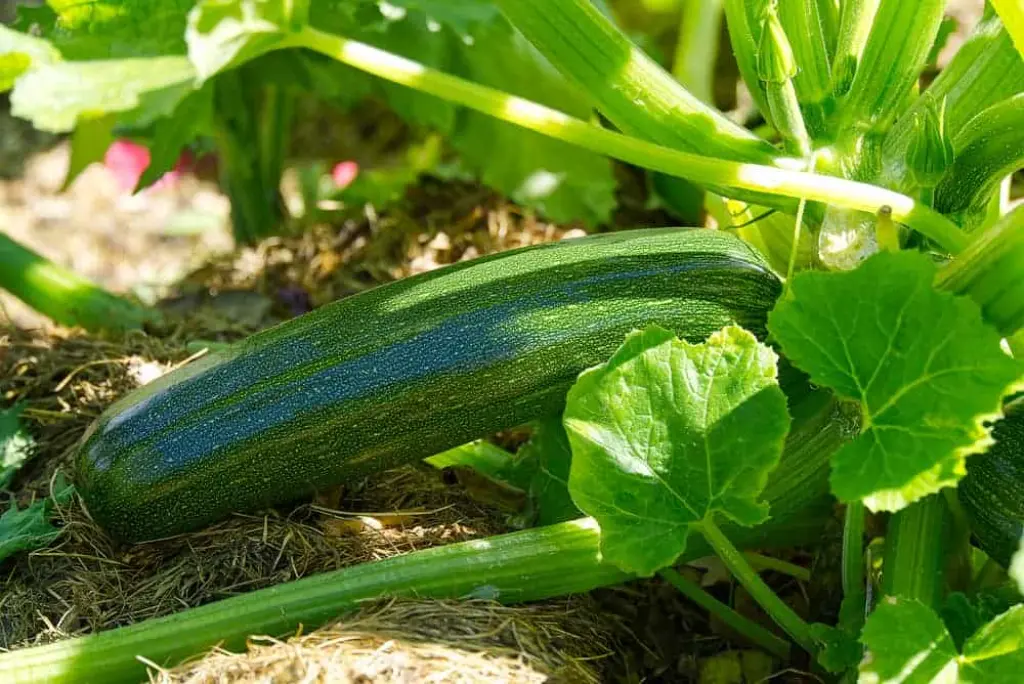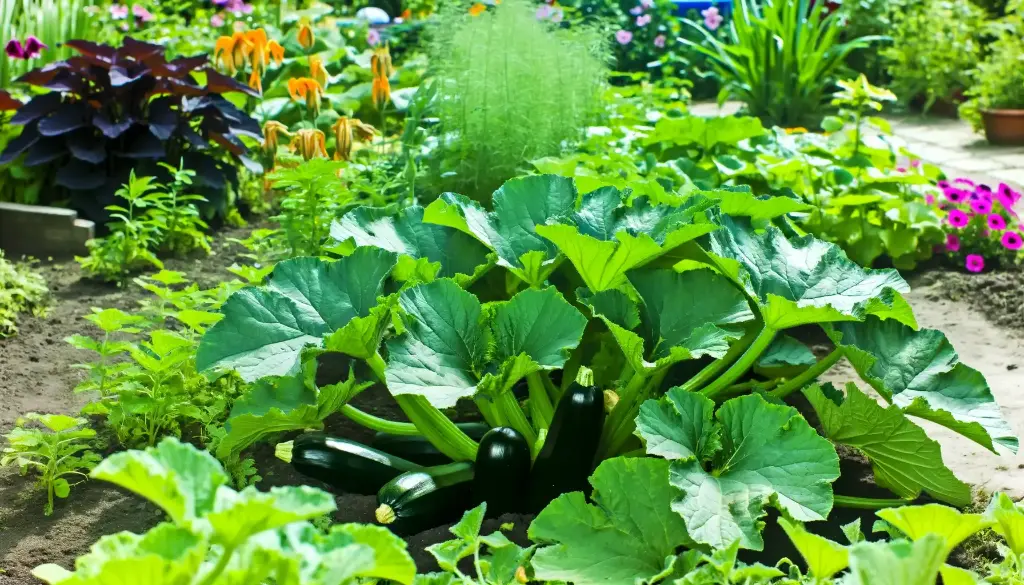
Zucchini, a type of summer squash, is a versatile and prolific plant that can thrive in a variety of climates. Whether you’re an experienced gardener or a beginner, this guide will provide you with everything you need to know to successfully plant and grow zucchini.

Zucchini (Cucurbita pepo) is a staple in many gardens due to its ease of growth and bountiful harvests. With proper care and attention, you can enjoy fresh zucchini from your garden throughout the growing season. This guide aims to provide detailed instructions on how to plant and care for zucchini, ensuring a successful and productive garden.
Choosing the Right Varieties
There are several varieties of zucchini, each with unique characteristics. When selecting a variety, consider your climate, space, and culinary preferences.
Popular Zucchini Varieties:
- Black Beauty: A classic variety known for its dark green skin and high yield.
- Golden Zucchini: Features vibrant yellow skin and a slightly sweeter flavor.
- Cocozelle: An heirloom variety with striped green skin and a rich, nutty taste.
- Patio Star: Ideal for container gardening due to its compact size.
Preparing Your Garden
Proper preparation of your garden is crucial for the success of your zucchini plants. Follow these steps to ensure your garden is ready for planting.
Soil Preparation:
- Soil Type: Zucchini prefers well-drained, loamy soil with a pH between 6.0 and 7.5.
- Soil Testing: Conduct a soil test to determine the pH and nutrient levels. Adjust the soil pH if necessary using lime (to raise pH) or sulfur (to lower pH).
- Amendments: Enrich the soil with organic matter such as compost or aged manure to improve fertility and drainage.
Garden Location:
- Sunlight: Choose a location that receives at least 6-8 hours of direct sunlight daily.
- Spacing: Ensure adequate space between plants to allow for air circulation and growth. Typically, space plants 24-36 inches apart in rows that are 3-4 feet apart.
Planting Zucchini
Proper planting techniques are essential for healthy and productive zucchini plants. Follow these steps for optimal results.
Seed Starting:
- Timing: Start seeds indoors 4-6 weeks before the last expected frost date, or sow seeds directly in the garden after the last frost.
- Containers: Use seed trays or small pots filled with seed-starting mix.
- Planting Depth: Sow seeds ½ inch deep and cover lightly with soil.
- Germination: Keep the soil moist and maintain a temperature of 70-75°F for optimal germination.
Transplanting:
- Hardening Off: Gradually acclimate seedlings to outdoor conditions by placing them outside for a few hours each day over a week.
- Transplanting: Once the danger of frost has passed and the soil temperature is above 60°F, transplant seedlings into the garden. Handle seedlings gently to avoid damaging the roots.
Direct Sowing:
- Timing: Sow seeds directly in the garden after the last frost date when the soil has warmed.
- Planting Depth: Sow seeds ½ inch deep and space them 2-3 feet apart in rows 3-4 feet apart.
Seasonal Care Guide
Here’s a handy seasonal guide to help you manage your zucchini care throughout the year:
| Month | Planting | Flowers | Pruning | Harvesting |
|---|---|---|---|---|
| Jan | ||||
| Feb | ||||
| Mar | Yes | |||
| Apr | Yes | |||
| May | Yes | |||
| Jun | Yes | |||
| Jul | Yes | |||
| Aug | Yes | |||
| Sep | Yes | Yes | ||
| Oct | Yes | Yes | ||
| Nov | Yes | |||
| Dec |
Watering and Fertilizing
Proper watering and fertilizing are crucial for the healthy growth of zucchini plants.
Watering:
- Frequency: Water zucchini deeply and regularly, providing 1-2 inches of water per week.
- Method: Use drip irrigation or a soaker hose to deliver water directly to the soil and minimize leaf wetness, which can lead to disease.
- Mulching: Apply a layer of mulch around the plants to retain moisture and suppress weeds.
Fertilizing:
- Initial Fertilization: Before planting, incorporate a balanced fertilizer (10-10-10) into the soil.
- Side-Dressing: Apply a nitrogen-rich fertilizer (e.g., fish emulsion or blood meal) when plants begin to flower. Repeat every 3-4 weeks.
Pest and Disease Management
Zucchini plants can be affected by various pests and diseases. Implementing preventive measures and prompt treatments can help protect your plants.
Common Pests:
- Squash Bugs: These pests suck sap from the leaves, causing wilting and yellowing. Handpick adults and eggs, and use row covers to protect young plants.
- Cucumber Beetles: These beetles can spread bacterial wilt. Use floating row covers and apply insecticidal soap if necessary.
- Aphids: These small insects can cause curling and yellowing of leaves. Use insecticidal soap or introduce beneficial insects like ladybugs.
Common Diseases:
- Powdery Mildew: This fungal disease causes a white, powdery coating on leaves. Improve air circulation and apply fungicides if needed.
- Downy Mildew: This disease causes yellow spots on leaves that turn brown. Use resistant varieties and apply appropriate fungicides.
- Bacterial Wilt: Spread by cucumber beetles, this disease causes wilting and death of plants. Control cucumber beetles and remove infected plants.
Harvesting
Zucchini is best harvested when it is young and tender. Regular harvesting encourages continuous production.
Harvesting Tips:
- Size: Harvest zucchini when they are 6-8 inches long for the best flavor and texture.
- Frequency: Check plants daily and harvest every 2-3 days during peak production.
- Method: Use a sharp knife or pruning shears to cut the fruit from the vine, leaving a short stem attached.
Storage and Preservation
Proper storage and preservation techniques can help you enjoy your zucchini harvest for an extended period.
Fresh Storage:
- Refrigeration: Store unwashed zucchini in the refrigerator for up to 1 week. Place them in a perforated plastic bag to maintain humidity.
- Freezing: Blanch sliced zucchini in boiling water for 2-3 minutes, then cool in ice water. Drain and pack into freezer bags or containers.
Preservation:
- Canning: Preserve zucchini by pickling or canning in a pressure canner. Follow safe canning guidelines to prevent spoilage.
- Drying: Slice zucchini thinly and dehydrate in a food dehydrator or oven at a low temperature until crisp. Store in airtight containers.
Growing zucchini can be a rewarding experience, providing you with a bountiful harvest of delicious and versatile vegetables. By following this comprehensive guide, you’ll be well-equipped to plant, care for, and harvest zucchini successfully. Happy gardening!

Frequently Asked Questions (FAQs)
Q1: How long does it take for zucchini to grow?
A: Zucchini typically takes about 45-55 days from planting to harvest, depending on the variety and growing conditions.
Q2: Can zucchini be grown in containers?
A: Yes, zucchini can be grown in containers. Choose a compact variety and use a large container with good drainage and nutrient-rich soil.
Q3: How can I prevent my zucchini plants from being affected by pests?
A: Use row covers, practice crop rotation, and introduce beneficial insects to help prevent pest infestations. Regularly inspect plants and take prompt action if pests are detected.
Q4: What are some companion plants for zucchini?
A: Good companion plants for zucchini include beans, corn, and marigolds. These plants can help improve growth and deter pests.
Q5: How do I know when zucchini is ready to be harvested?
A: Harvest zucchini when they are 6-8 inches long for the best flavor and texture. They should be firm to the touch and have a glossy skin.
By following this guide, you can successfully grow and enjoy zucchini in your garden, reaping the rewards of your efforts with a plentiful harvest. Happy gardening!



